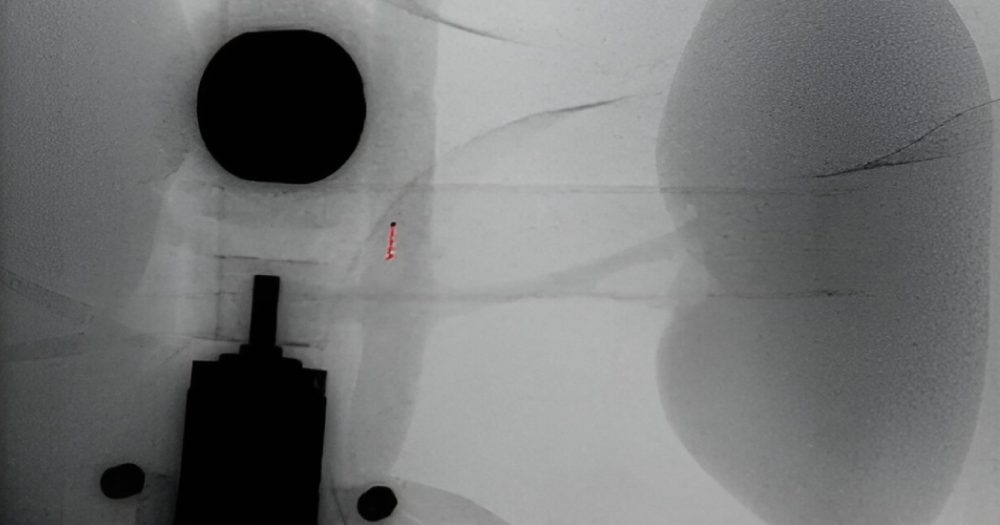These wireless millirobots can navigate arteries

For the first time ever, wireless millirobots navigated a narrow blood vessel both along and against arterial flow.
Researchers from the University of Twente and Radboudumc inserted the screw-shaped robots in a detached aorta with kidneys, which they controlled using a robotically controlled rotating magnet. The researchers plan to develop the technology further to remove blood clots.
Why does it matter?
Each year worldwide, one in four people die from conditions caused by blood clots. A blood clot blocks a blood vessel, preventing the blood from delivering oxygen to certain areas of the body.
Surgeons can use flexible instruments to remove the blood clot, therefore allowing the blood to flow again, but some regions in the body are difficult to reach. Millirobots can overcome these limitations and remove blood clots from difficult-to-reach blood vessels.
The researchers showed that these millirobots were able to travel through blood vessels. But to do so, the millirobots need power to travel up and downstream and to be controlled and localized accurately. Last but not least, they need to be biocompatible and leave no further damage to the inside of blood vessels.
How does it work?
At the Technical Medical Center of the University of Twente, the researchers set up their experiment with a real aorta and kidneys.
The effort required an interdisciplinary approach and the collaboration of many different departments — including the Robotics Lab, Laboratory of biointerface, blood lab, DesignLab, LipoCoat, and MESA+.
In the experiment, the researchers used a robotically controlled rotating magnetic field to control the millirobots wirelessly. With an X-ray machine, they were able to localize the millirobot while steering through the aorta. The researchers maintained a maximum arterial flow of 120 ml per minute inside the aorta. But with a stronger magnetic field, the millirobots should be able to overcome a greater blood flow. The millirobots performed stable straight runs with and against the flow and also with multiple robots at the same time.
The robots themselves are 3D-printed, screw-shaped objects with a small permanent magnet inside. This tiny magnet of just one millimeter long and one millimeter in diameter is placed in such a way that it can rotate the 'screw' in both ways — allowing for swimming against the flow and then turning around and swimming back.
The small size makes it possible to use several robots at the same time, while the screw shape makes it possible to drill through a blood clot.
"These millirobots have huge potential in vascular surgery," said Michiel Warle, a vascular surgeon at Radboudumc. "Currently, we use blood thinners and flexible tools, but a millirobot can travel to hard-to-reach arteries while they only need minimal incisions to be inserted."
What's next?
In a new collaboration with Radboudumc and Triticum Medical (Israel), the researchers will further develop the millirobots to enable them to remove blood clots wirelessly. The consortium will look at ways to exploit this technology, fostering collaborative growth in medical robotics and technical medicine.
Besides breaking up the blood clots to enable the blood flow of arteries, the technology can potentially be used for other targeted interventions and eventually be used to deliver drugs to very specific places in the body where the drug is needed the most. That way, we have minimal side effects in the rest of the body, according to one of the researchers - Islam Khalil.
💡Did you know?
You can take your DHArab experience to the next level with our Premium Membership.👉 Click here to learn more
🛠️Featured tool
 Easy-Peasy
Easy-Peasy
An all-in-one AI tool offering the ability to build no-code AI Bots, create articles & social media posts, convert text into natural speech in 40+ languages, create and edit images, generate videos, and more.
👉 Click here to learn more


